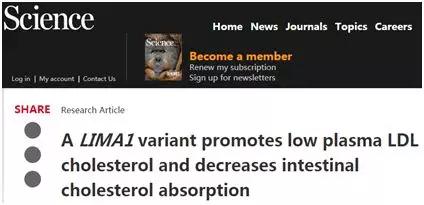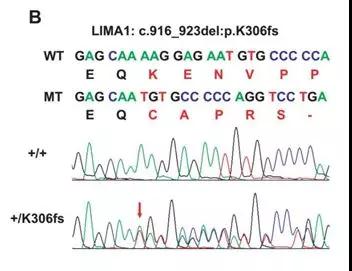Chinese scholar Science's latest achievement: inhibition of LIMA1 can treat hypercholesterolemia
June 12, 2018 Source: Biological Exploration
Window._bd_share_config={ "common":{ "bdSnsKey":{ },"bdText":"","bdMini":"2","bdMiniList":false,"bdPic":"","bdStyle":" 0","bdSize":"16"},"share":{ }};with(document)0[(getElementsByTagName('head')[0]||body).appendChild(createElement('script')) .src='http://bdimg.share.baidu.com/static/api/js/share.js?v=89860593.js?cdnversion='+~(-new Date()/36e5)];On June 7, 2018, Eastern Time, Professor Song Baoliang from Wuhan University and Prof. Ma Yizhen from the First Affiliated Hospital of Xinjiang Medical University, as co-authors, published a new achievement in Science, indicating inhibition of LIMA1 (LIM domain and actin binding). 1; SREBP3) can reduce cholesterol absorption and help treat hypercholesterolemia.

DOI: 10.1126/science.aao6575
Low-density lipoprotein cholesterol (LDL-C) accumulates in the arteries, causing heart disease and stroke. Therefore, understanding the causes of LDL-C accumulation is important for disease prevention. Previous studies have shown that LDL-C levels are controlled by both genetics and diet. Understanding the genetic regulatory mechanisms of human LDL-C levels is a prerequisite for disease diagnosis and drug development, and only a few genes affecting LDL-C have been identified.

A spatial filling model of cholesterol molecules. Image source: Wikipedia
In this study, Song Baoliang's team worked with Ma Yijun's team to focus on a family of low-LDL-C Kazakhs and successfully isolated a special genetic mutation, the LIMA1 gene mutation.
Subsequently, the team conducted genetic testing on 509 people from the Chinese Kazakhs (they had low levels of LDL-C in their blood). Data analysis showed that individuals with low levels of LDL-C in the blood also carried the same genetic mutations, whereas those who did not carry the mutation had normal LDL-C levels. Careful observation revealed that this genetic mutation led to the production of a protein called LIMA1. The researchers speculate that this protein is a regulator of LDL-C.

A low cholesterol Kazakh family diagram

LIMA1 gene mutation found in low cholesterol people
To further understand LIMA1, the researchers studied mice and found that the protein appears to be expressed in the small intestine and anchors the muscle to the muscle by interacting with the NPC1L1 protein, which is also revealed by the Song Baoliang team's pre-work system. The globulin Myosin Vb regulates the absorption of cholesterol in the small intestine.

LIMA1 regulates intestinal cholesterol absorption by binding NPC1L1 and Myosin Vb
In summary, this study provides a new drug development target for cholesterol lowering, and also helps to understand why Kazakh people consume more beef and mutton, but the prevalence of cardiovascular and cerebrovascular diseases is lower than that of the Han population.
Reference materials:
1) INHIBITING LIMA1 COULD TREAT HYPERCHOLESTEROLEMIA
2) Gene change after protein that knows the rights,
3) "Science" published the latest research results of Song Baoliang team
Crushing Machine,Portable Horizontal Band Sawmill,Drum Wood Chipper,Wood Shaving Machine
Shandong Longze Mechanical Equipment Co.,Ltd , https://www.pelletmachinefactory.com